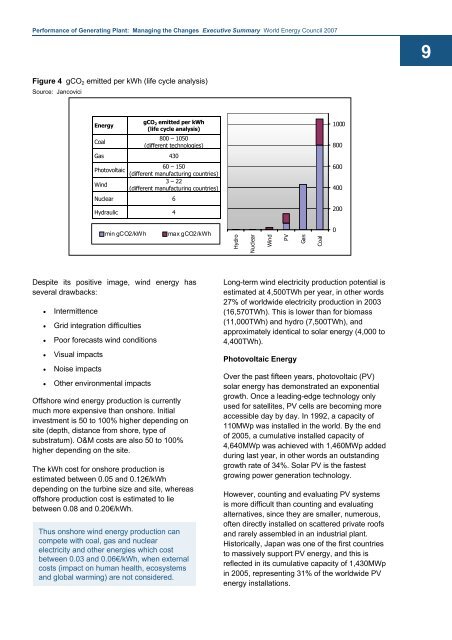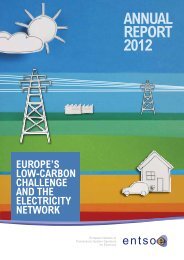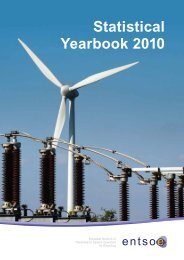Performance of Generating Plant - World Energy Council
Performance of Generating Plant - World Energy Council
Performance of Generating Plant - World Energy Council
You also want an ePaper? Increase the reach of your titles
YUMPU automatically turns print PDFs into web optimized ePapers that Google loves.
<strong>Performance</strong> <strong>of</strong> <strong>Generating</strong> <strong>Plant</strong>: Managing the Changes Executive Summary <strong>World</strong> <strong>Energy</strong> <strong>Council</strong> 20079Figure 4 gCO 2 emitted per kWh (life cycle analysis)Source: JancovicigCO2 emitted per kWh (life cycle analysis)<strong>Energy</strong>gCO 2 emitted per kWh(life cycle analysis)Coal800 – 1050(different technologies)Gas 43060 – 150Photovoltaic(different manufacturing countries)Wind3 – 22(different manufacturing countries)Nuclear 6Hydraulic 41000800600400200min gCO2/kW hmax gCO2/kWhHydroNuclearWindPVGasCoal0Source: JancoviciDespite its positive image, wind energy hasseveral drawbacks:• Intermittence• Grid integration difficulties• Poor forecasts wind conditions• Visual impacts• Noise impacts• Other environmental impactsOffshore wind energy production is currentlymuch more expensive than onshore. Initialinvestment is 50 to 100% higher depending onsite (depth, distance from shore, type <strong>of</strong>substratum). O&M costs are also 50 to 100%higher depending on the site.The kWh cost for onshore production isestimated between 0.05 and 0.12€/kWhdepending on the turbine size and site, whereas<strong>of</strong>fshore production cost is estimated to liebetween 0.08 and 0.20€/kWh.Thus onshore wind energy production cancompete with coal, gas and nuclearelectricity and other energies which costbetween 0.03 and 0.06€/kWh, when externalcosts (impact on human health, ecosystemsand global warming) are not considered.Long-term wind electricity production potential isestimated at 4,500TWh per year, in other words27% <strong>of</strong> worldwide electricity production in 2003(16,570TWh). This is lower than for biomass(11,000TWh) and hydro (7,500TWh), andapproximately identical to solar energy (4,000 to4,400TWh).Photovoltaic <strong>Energy</strong>Over the past fifteen years, photovoltaic (PV)solar energy has demonstrated an exponentialgrowth. Once a leading-edge technology onlyused for satellites, PV cells are becoming moreaccessible day by day. In 1992, a capacity <strong>of</strong>110MWp was installed in the world. By the end<strong>of</strong> 2005, a cumulative installed capacity <strong>of</strong>4,640MWp was achieved with 1,460MWp addedduring last year, in other words an outstandinggrowth rate <strong>of</strong> 34%. Solar PV is the fastestgrowing power generation technology.However, counting and evaluating PV systemsis more difficult than counting and evaluatingalternatives, since they are smaller, numerous,<strong>of</strong>ten directly installed on scattered private ro<strong>of</strong>sand rarely assembled in an industrial plant.Historically, Japan was one <strong>of</strong> the first countriesto massively support PV energy, and this isreflected in its cumulative capacity <strong>of</strong> 1,430MWpin 2005, representing 31% <strong>of</strong> the worldwide PVenergy installations.













